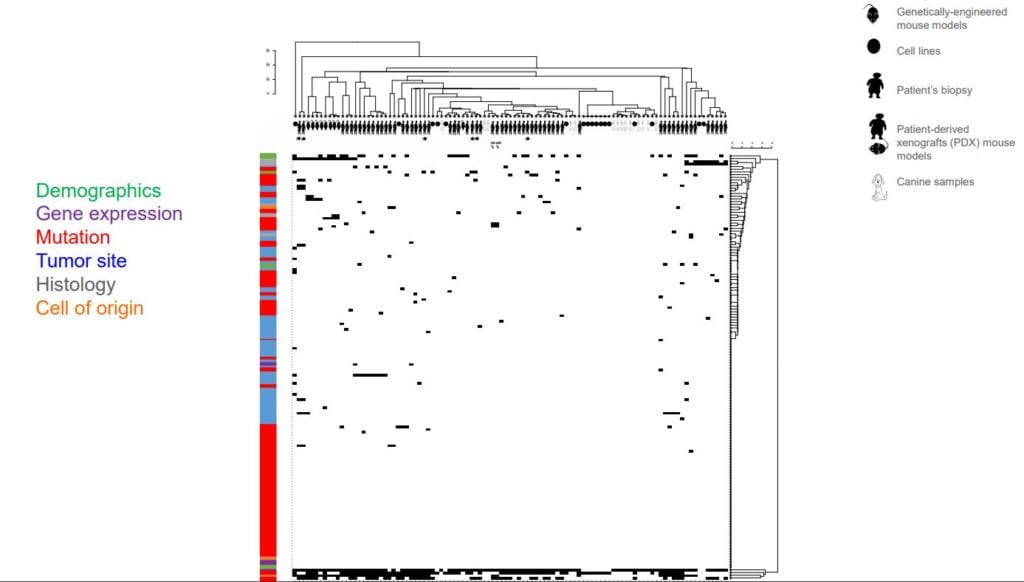To define the major endotypes, or pathobiological mechanisms, of embryonal rhabdomyosarcoma (ERMS) we’ve collected several human, mouse, and canine samples and clustered them together based on their RNA and DNA sequencing. We’ve been collecting as many samples as possible to ensure that we understand the full breadth of ERMS. Two of these new samples were from a mouse cell line, RMS14 (pictured below) and RMS772. I’ve run several other cell lines’ RNA and DNA sequencing data through our computational analysis pipeline and will use the results to add new samples to our ERMS dendrogram, or clustering tool.

As part of my project, I’ve been looking into two ERMS-related variants and their potential role in tumor growth and maintenance. My first set of experiments has focused on mimicking the variant by reducing the expression of the protein via short hairpin RNA (shRNA) lentiviral transduction. We can see that the knockdown worked using a western blot. The blot contains a cell that did not undergo lentiviral transduction next to the cell line that did. The next step will be to do a colony formation assay, which will assess the ability of a cell to grow into colony that continuously divides. All of this work will be included in an upcoming manuscript – stay tuned!


